Arturo Francesco "Art" Merzario, born 11 March 1943 in Civenna, Como (erroneously registered as Arturio on his birth certificate), a life as a driver but fame for saving Lauda. But Arturo is more than that. Nonconformist, direct, friendly, Gascon. At 10 years the scooter, at 16 the car, driven without a license, always oily hands. He wanted to be a surgeon, assisting with local anesthesia to his own operations on his legs, but gave up because of his lack of propensity to study. He survived the amputation of his feet because of his burned ankles after an accident in Magione in 1991 with several fractures in his lower limbs, relying on a Romanian doctor who practiced 1600 injections on each of his legs. The gambles of a drink won with the police downhill with his 48 cc scooter against their Guzzi 250 cc. Not a leading F1 driver, but he still left a mark with his personality and competence.
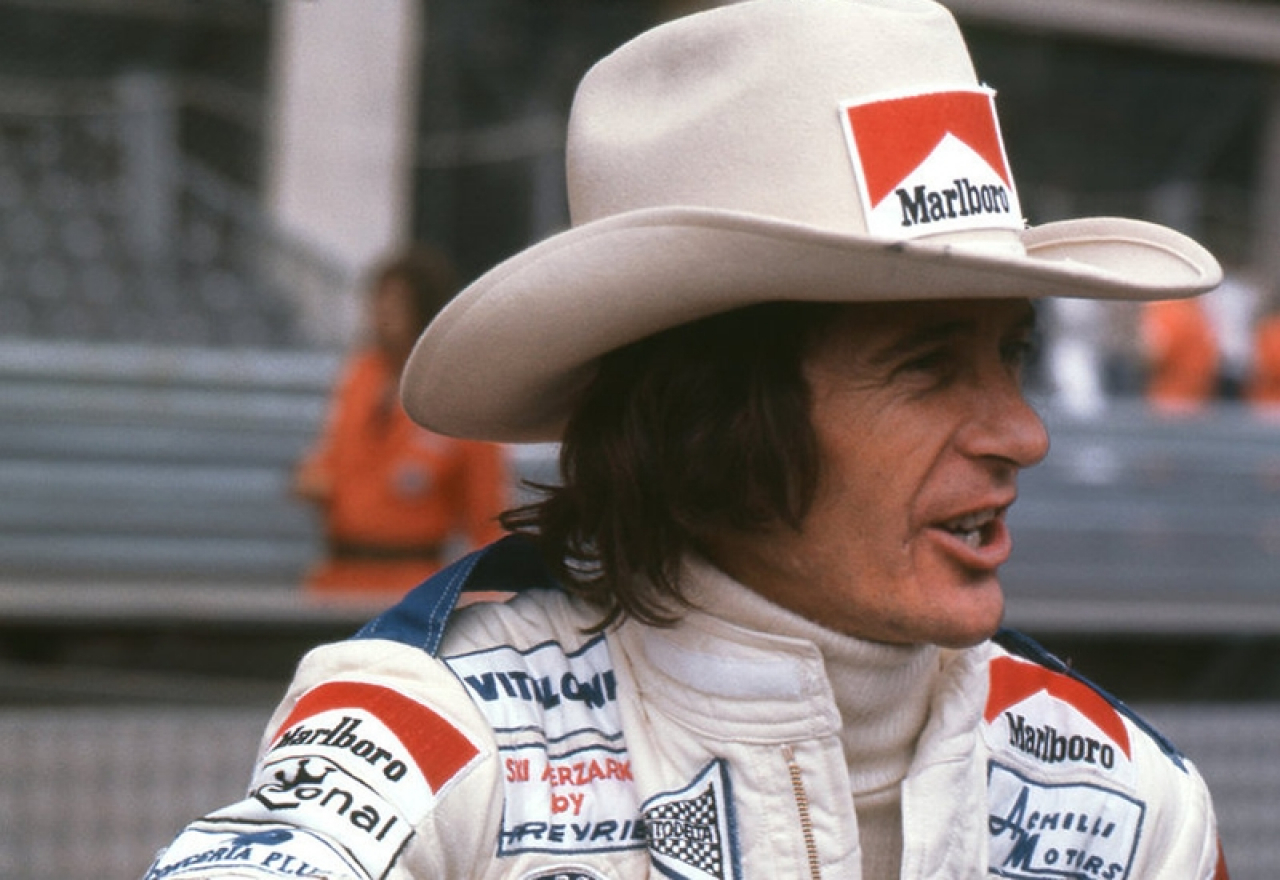
Born a stone's throw from Ghisallo the 'jockey', as many had nicknamed him in the automotive environment for his dry physique and short stature, is married to the blonde 'Mami' who gave him two children and is still in full activity in the world of motors.
The passion for sports cars into the Merzario family was well known throughout Brianza. The father Ugo, a construction builder with houses and villas built in every corner available from Erba to Bellagio, also owned a Ferrari among the different cars, while the two sons roamed around the lake at great speed with an Alfa Romeo spider for each of them. And right in his flaming red Duetto Arturo's brother died, very young, in a dramatic road accident during military service. The tragic event brought the family to its knees but didn’t quench Arturo's desire to race.
In 2010 he was elected honorary President of the Scuderia del Portello, which is dedicated to the conservation and preparation of sports and historical Alfa Romeo models to be presented on the tracks of the world. Arturo Merzario is famous for his brilliant performances with every type of car, for his victories with the Ferrari, Alfa Romeo and Osella prototypes but also for his inevitable sponsored cow-boy hats that have now accompanied him inseparably for more than fifty years. He loved American films and felt a bit like the cow-boy of motorsport.
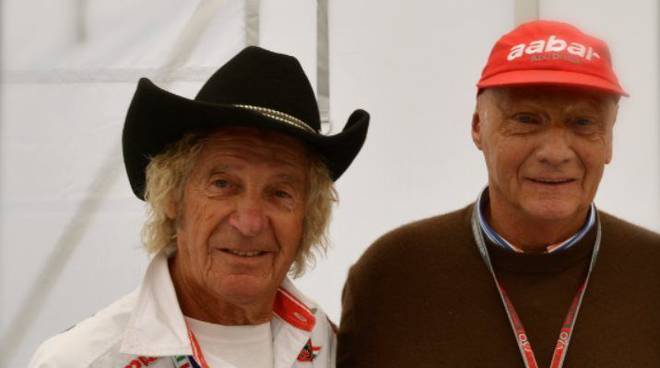
In 1976 in Germany Niki Lauda crashed heavily; Arturo was one of the drivers, along with Guy Edwards, Brett Lunger and Harald Ertl, who stopped to help. 37 years later, in an interview with BBC Radio 5 linked to the release of “Rush”, Lauda stated that "Merzario jumped into the fire and, alone, pulled me out of the wreckage so I survived… He really saved my life there, because a couple of seconds more I would have never made it."
"There were many problems, the chassis had twisted, the danger was that sheets would cut me," Arturo said remembering the accident.
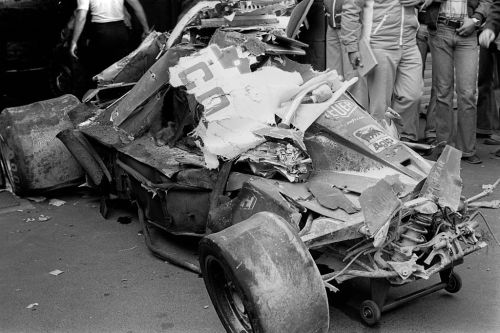
Of the burning of the Nurburgring you know now almost everything, books have been written, produced documentaries, investigations; Ron Howard even made a movie, Rush, a big comic book a little controversial but all in all truthful. And yet, many years after, a mystery, a little mystery, still exists. And we want to unravel it by publishing an article, dated 30.05.2019, by Sandor Van Es.
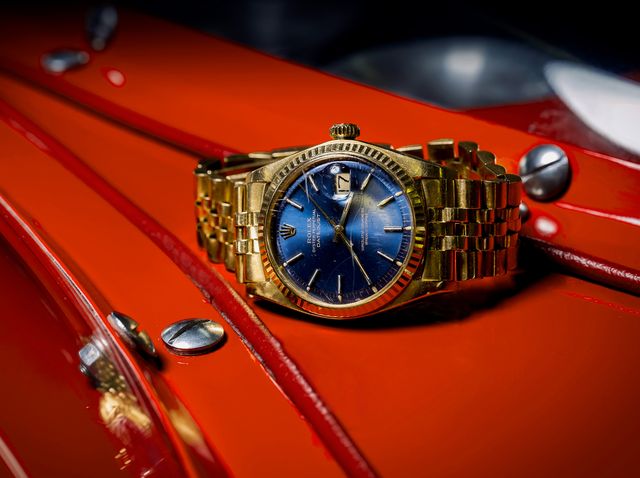
Maurice Volmeyer.
The tale of Niki Lauda's rescuer and a Rolex Datejust.
In 1976, Arturo Merzario dived into flames to free Niki Lauda from his wrecked F1 car. The rescuer was given a gold Rolex as a thank-you but has never worn it — till now. He reveals why.
Besides his dyed hair and wrinkled face, Arturo Merzario, 76, still looks as he did in his Sixties-Seventies heyday: dressed in a light blue racing overall and white cowboy hat, the kind he always wore for sponsor Marlboro. The outfit is more than nostalgia; he has been racing all his life and still competes today, although his heart belongs to the classics: “already in the mid-Seventies, Formula One became too technical for my taste.”
During his long career, Merzario tasted victory at the Targa Florio and the Spa 1.000 km. But in 85 GP from 1972–’79 the Italian never finished higher than fourth, despite a two-year factory seat at Ferrari — not in its finest form at the time. Further stints for Williams, March and Wolf saw his results decline further and an ill-fated attempt to race his own cars (based on March and Kauhsen chassis) in 1978 and 1979 yielded few qualifications and no race finishes.
An inauspicious record in F1 does not do justice to Merzario’s ability. Yet he stole the hearts of many fans with his outgoing appearance and character. And one single, heroic moment made him immortal: in August 1976, Merzario rescued Niki Lauda from his burning Ferrari at the Nürburgring and saved his life.

Maurice Volmeyer.
A few months later, Lauda gave his rescuer a gold Rolex, an Oyster Perpetual Datejust. A wonderful gesture you would say, yet Merzario has distinctly mixed feelings about it. He never wears the watch, but has agreed to bring it out to be photographed for the first time in 43 years. He calls out to his wife who fishes the Rolex from her handbag and gives it to us. A very special moment: this timepiece has not seen daylight for decades and it represents one of the most heroic moments in motorsport history. It also tells a different side of that story, one of great disappointment.
First we go back to 1 August, 1976. The Großer Preis von Deutschland is about to start at the Nürburgring, the 14.2-mile “Green Hell” in the hills of the Eifel. These are the killer years in F1, an era when death is always near. Piers Courage, Jochen Rindt, Jo Siffert, Roger Williamson, François Cevert, Peter Revson and more: the list of fatalities is long. Reigning world champion Niki Lauda and title rival James Hunt share the first starting row. Lauda has won five of the first nine races against Hunt’s two and thus has a comfortable points lead. Yet he is nervous. In the days before the race, the Ferrari ace has made no secret of the fact he considers the Nürburgring no longer suitable for F1; indeed it had already been agreed by the sport’s top brass that 1976 would be its final year on the calendar. Due to drizzle right before the start, everybody is on wet tires, but the rain turns out to be nothing. After the first lap, all cars rush into the pit lane to switch to slicks. Lauda loses a lot of positions after his stop and immediately tries to make them up.
At Bergwerk, an ultra-fast passage halfway along the circuit, things go wrong. Lauda loses the rear end of his 312T2 and slams into a rock wall at 136 mph. The car spins back on the track. Guy Edwards manages to avoid him but Brett Lunger and Harald Ertl collide with the flaming wreck. The three drivers leap out of their cars, but panic and don’t know what to do. Meanwhile, Arturo Merzario has also stopped. Without any hesitation he dives into the fire and manages to free Lauda.
A salient detail is Merzario and Lauda weren’t exactly friends. In fact, the egocentric Viennese drew little affection from most of his colleagues, but that didn’t play any role during the rescue.
“You just do what you have to do,” says the Italian. “Niki cried out in pain and fear. Because his body was completely stressed, I did not manage to release the seat belts at first. The heat was so intense that I had to step back a few times. At the third attempt he was unconscious and I was able to unlock the buckle.” He pauses, his mind wandering off to the moment.
“I weighed only 60 kilos. It is a miracle I was able to drag Niki out of the cockpit and away from the car. I thought he was dead, then I saw he’d swallowed his tongue. In the army I’d learned how to get it out, so I did. Luckily I was still wearing my racing gloves, they offer more grip than bare hands. Then I gave him a cardiac massage and mouth-to-mouth until the doctor arrived. During the crash, Niki’s helmet had been torn off, causing severe head burns. When he woke up and asked what his face looked like, I knew he’d make it.”
Having inhaled poisonous gases, Lauda fought for life for almost a week. Incredibly, he made it and 41 days later was back in his Ferrari for the Italian GP in Monza, missing only two races. It was the first time since the crash Lauda had seen his rescuer. You’d expect Lauda to be enormously grateful, but it didn’t seem the case. “He just walked past me and didn’t even say ‘thank-you’,” says Merzario, visibly still offended.
Lauda tried to make up for it a week later, when Merzario was at the Salzburgring competing in a sports car race. “He suddenly stood in front of me to give me the Rolex,” says Merzario. But his Italian pride was so hurt he did not want to accept it. Certainly not in the way it was handed to him. “Niki carelessly took the watch off his wrist. He had certainly not bought it especially for me.”
Sources report Lauda had won the watch earlier that year for his pole position in Monaco; Merzario says it was a present from his former girlfriend Mariella von Reininghaus, for winning the 1975 world title. In either case, the Rolex was probably not of great value to Lauda. Eventually, Merzario’s team boss Carlo Chiti convinced his driver to accept the gift. “After that we hardly spoke to each other for 30 years,” says Merzario.
It was Bernie Ecclestone who reunited the two at the Nürburgring, during the 2006 European GP. “Bernie lured me by asking me to drive the safety car, but what really mattered to him was a press moment at the old Nordschleife, the scene of the accident,” Merzario says. “People asked me about the crash. Everyone assumed it was due to a broken suspension or another technical defect; nobody wanted to believe the great Lauda had made a mistake. But he did. Until Adenau the track was completely dry, after that there were wet spots here and there. You could take the left kink just before Bergwerk full throttle. You had to be right on the edge of the kerbstone on the inside. There was, however, some standing water there. From a distance I saw Lauda drive through it, after which he lost his car.”
Since the press moment, Lauda and Merzario started talking again; and though not best friends, time has mellowed them. Occasionally, they meet in a paddock somewhere, pose for photos, having a laugh and a chat. One way or the other, the two are connected by a heroic rescue action, connected by an era in which everything was different.

Nevertheless Merzario has never worn the Rolex. “Never ever!”, he states with an offended face. But his disinterest may be artful; when we finish our photos he looks around nervously, “where is my Rolex?!” Apparently the gift means more than he wants to admit. I return the watch to him, after which it disappears back into his wife’s handbag. Back to the darkness of the safe.
Merzario, seventy years of running. Milan, March 11, 2013.
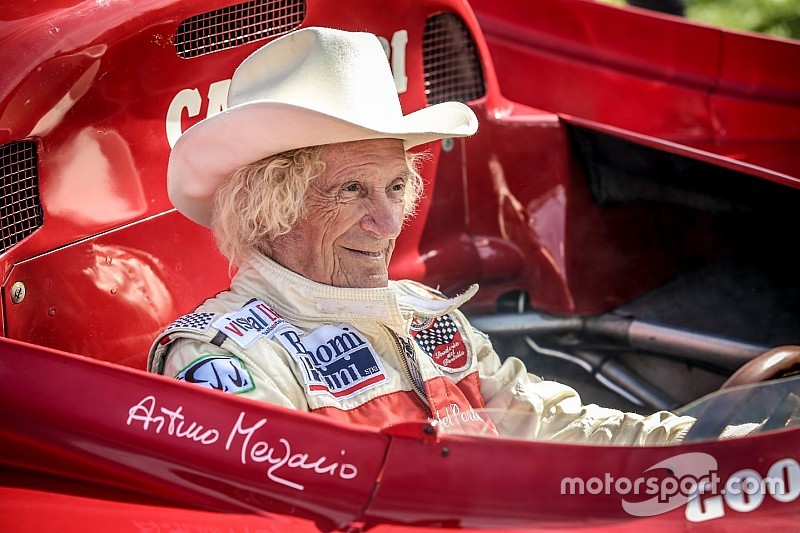
At an age when many drivers have retired for years, he is still on track: Arturo told the years between F1 and Prototypes and what he saves from today's GPs.
Please, don't call him a "former" driver”...
Otherwise I get pissed off! I am still a true driver; and not a "runner". I was born a pilot with my legs and, since my second race, I am a remunerated driver. I do not say paid because it is bad..." Here it is, in three lines, the Arturo Merzario who turned 70 on 11 March and who, on April 21, began his 51st racing season, on the occasion driving a Grand Touring Lotus. The face marked by wrinkles reminiscent of the two hundred curves of the old Nürburgring, "his" track, still a skinny little guy, very lively, talkative, controversial, meticulous, funny, professional: the most popular Italian driver. Thanks to his history and to his still being there, as a driver and protagonist of important historical re-enactments, as a counter-current commentator and, last but not least, for being the man who saved Niki Lauda from the stake guaranteeing he could continue to live and win. "But I think (I hope) to be remembered and recognized more for my successes and my sporting history.”
Yes and then with Lauda there was bad blood.
"It’s an old human story. In '71, with Abarth, I was playing the European title in Salzburg, the last race. He sided as an intruder in the championship with Chevron. Well, in the deficit of horsepower, I could not keep up well in his wake so he won, I was second. I kicked my car (and Carlo Abarth gave me a real going over), then I caught Lauda by the tie "you made me lose the championship!" And he said "I am paid to race and race to win." Then he took my place at Ferrari in F1, but that has nothing to do with it. There was the complicity of Clay, Regazzoni, who was on that occasion a bit naughty: we should have teamed up with him at Ferrari, but he suggested hiring Lauda who was racing with him at the BRM and of whom he was regularly staying ahead..."
I felt bad after the accident because of Lauda's attitude: I was expecting a phone call, not a thank you, maybe a "fuck you", but nothing and in the first press conference he didn't even deign me of a mention!"
But he gave you a precious watch, a pledge of his gratitude.
"Ah yes. The watch? It happened a year later: I was in Salzburg for a race with Alfa. He came down from his house - which was right above the circuit - and brought me that Rolex... But I knew it was a gift recycled, from Mariella, his first girlfriend and I said to Niki "you can put the watch in ...." Engineer Chiti took it over and then gave it to me. But I never wore it. I couldn't even wear my Rolex or other watches because everyone was telling me. "Ah, here's Lauda's watch, how nice!""
Then between saved and savior the serene returned.
“This is thanks to Bernie Ecclestone who, in 2006, organized a ceremony on the track at the point of the accident, which required me to collect a plastic ear, carnival shop stuff, from behind the guard rail and deliver it to Lauda saying "I have found this that I forgot to give you 30 years ago." It ended with a nice dinner, full of stories and memories.”
Lauda, who is younger, has long since stopped, you continue. Why?
“First for passion: racing is my life; secondly because I don't struggle not even to be in front, even of many younger than me. And then I perceive, through some sponsors, a small income. In addition, I participate - hired - in important historical events, competitions and rallies in Italy and abroad for which my suit and tuxedo are always ironed, ready for use.”
Do you remember the first race?
"October 14, 1962, Fisa cup in Monza. I don't know if it was also luck, however I arrived eighth out of 30 with my Giulietta Spyder Veloce (with the hardtop on) equipped with record player and car radio, the car I used to run around on the streets of Lario to "load" the girls: and against I already had Giulietta SZ and drivers like Baghetti and Bandini..."
Well, if at 19 you had the Giulietta Spyder, you weren’t so bad.
"I was lucky because I come from a wealthy family. My father was a building contractor, in short he was a “magûtt” (mason) and he built houses. He liked cars and he had a Ferrari and a Maserati. I took them and used to run around the streets of Lario even when I was 16..., the carabinieri turned a blind eye. I had a good education, also cultural. And maybe that's why I still don't fight with the subjunctive. Mum was a teacher. Indeed, in the first three years of school she was my teacher and I had to “darle del lei” (be polite) in class. I was left-handed but at the time it was not accepted. So they tied my left hand behind my back to make me write with my right one. Today writing is the only thing I do with my right hand. I didn't really want to study. I was studying accounting but I ran away from college. They put me in the institute for surveyors to follow in the footsteps of my father builder and I ran away from Cremona hitchhiking. My university was the sidewalk. Let's say that I preferred to "attend" the construction sites where my father's business operated."
Already quarrelsome and controversial?
"I have always said what I think. Even when I was at Ferrari and they would have liked me to tell lies, for example that the car broke due to the Dinoplex (ignition). I was telling the truth, that a connecting rod had smashed the engine and that almost hit me in the face... Many in Maranello could not stand me also because the Old Man (Enzo Ferrari) was holding me in his sleeve. I was the only one who gave him to you and who was allowed to smoke in front of him. The others were indignant, he said "let him smoke." He liked me because I replied and argued. I said to him in my dialect "rump minga i cujuni!" (you don’t have to bust my balls) and, just to argue, he replied in his one "S’al dis maroni!" (you say maroni!) I got on well with him even later, when I left Maranello."
Enzo Ferrari was not the only builder of character with whom you developed a very intense professional and human relationship, Carlo Abarth, for example.
"I grew up with Abarth. I arrived as a wealthy and easy-going and also impertinent boy, I pretended to do whatever I wanted. Abarth took me aside and lectured me. A father-master, or rather a grandfather-master. I took him to race important races from the little challenges he was doing. I used to call them so, the uphill races and he got pissed. Abarth was very ahead in many things: for example he created a line of clothing related to the brand and to the races, that was called Autoboutique. Clothes were drawn by his wife, a former model and Mila Schoen. But he, a maniac of quality, pretended that only precious materials were used, so the final product was too expensive and sold very little. With Abarth, if you made a small criticism of the car he would stop everything, he had to disassemble and check. His first thought was for the driver, for safety, perhaps at the expense of performance. Ferrari was the exact opposite."
Then you became a Formula 1 builder yourself.
"The mistake of my life. I burned a lot of money. When I closed in 1981, I had already spent 500 million lire and I had 800 million debts: I paid everything, with difficulty. But you know that I hired Giorgio Piola as a designer? Few knew him at the time, then he became famous as a F1 technical-journalist."
A pity to have burned so much wealth. Of course you have always been well supported and well sponsored, with that Philip Morris hat...
"Wait a minute: the hat had already been my hallmark for years. I bought it on my first trip to America in '67, in homage to my passion for cowboys. The first tobacco sponsor, Astor, came to me and Clay Regazzoni - with whom we understood each other very well, he was in Ticino and me in Como - thanks to the proposal of a certain Barchetta, who was the biggest smuggler of the lake. "Put the label on the helmet and on the suit. Then at the end of the year we’ll handle it", he said. And at the end of the year a check in Swiss francs arrived with a lot of zeros! Philip Morris came later and made me a contract, not very rich but for an indefinite period, as ambassador of other brands of the group."
With this past you will enjoy a golden pension.
"Eh no. Despite all the money I left to the state in taxes (but sometimes the balance at the end of the year was in my favor and I still proudly keep the photocopies of the checks of the Bank of Italy of the returned taxes) I have not retirement: I did not make any social security payments because I didn't know it and because nobody suggested it to me. When I reached the age of 65, I was sent the letter of INPS saying to bring the documents for the pension. The city clerk said to me, "cusa te voeur Merzario, la pensiun? Ma ti te minga diritt. Nemmeno la minima!” (What do you want from Merzario, the pension? You are not entitled to it, not even the minimum!"
Merzario, do you consider yourself a lucky man?
"Yes, because I was able to do many of the things I wanted and because I am alive having raced so much in a period in which accidents were often fatal. I celebrated 50 years of racing, now 70 years and next year is the golden wedding anniversary.”
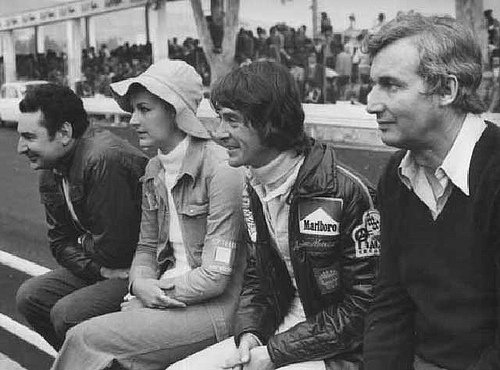
1973, in the pits of Cerda, Enzo Osella, Mrs. Merzario, Parkes and Arturo Merzario.
I have been married since 1964. I will be 101 years old, like my grandmother. As a young man I was very "mischievous" and, when my future wife's parents bought the Stella hotel in Asso (the hotel where Inter football team went on retreat), a town near Civenna where I was staying, friends told me: "hey Arturo, do you know that a new family has arrived at the Hotel Stella? The owners have three daughters, one more beautiful than the other." I said, okay, what do you want it to be, one day we will go and see. I frequented Lido di Bellagio or Orsa Maggiore (Ursa Major), between Lecco and Abbadia. I snubbed Asso, I hated it because I went to middle school there. But one day I went to the bar of the Stella hotel. The daughters were 25, 23 and 14 years old (my future wife). I went in. Shortly afterwards I said "Madame, I like your daughter and I will marry her." Of course she kicked me out of the club. And then the war began, that is, courtship and all the rest. We got married when we were still minors (at the time you would come of age at age 21). Everyone said it wasn't going to last long..."
With 40 years less, would you try a F1 today?
"I would need goggles to see up close all those commands with which I would not understand anything. No, I would not be able to. But even today a driver could not drive one of our F1 cars, perhaps at the Nürburgring: he would not end the first lap, incurring heavy collateral damage. Comparisons are impossible: we are exponents of generations who have grown up in different worlds and ways."
And today's F1?
"I do not like it."
Not even a driver today?
"The pale "(Lewis Hamilton), who is the best. Even better than Vettel who is a bit like the Lauda of my time, capable of losing to win. Instead, Hamilton sometimes loses because he is a “pirla” (an idiot). But that’s how he is built. I like him."
Arturo Merzario, the cowboy driver. By Mauro Corno, 08 July 2015.
He saved Niki Lauda's life. In "Rush", the Ron Howard film that retraced the duel between the Austrian and James Hunt, the right merit did not go to Arturo Merzario. Who was initially mildly upset but now laughs at it. "They got me a little dirty, but that's just fiction: 80% of what is contained in the film is pure fantasy and is enormously exaggerated. Life is different: it's been 72 years old and in great shape».
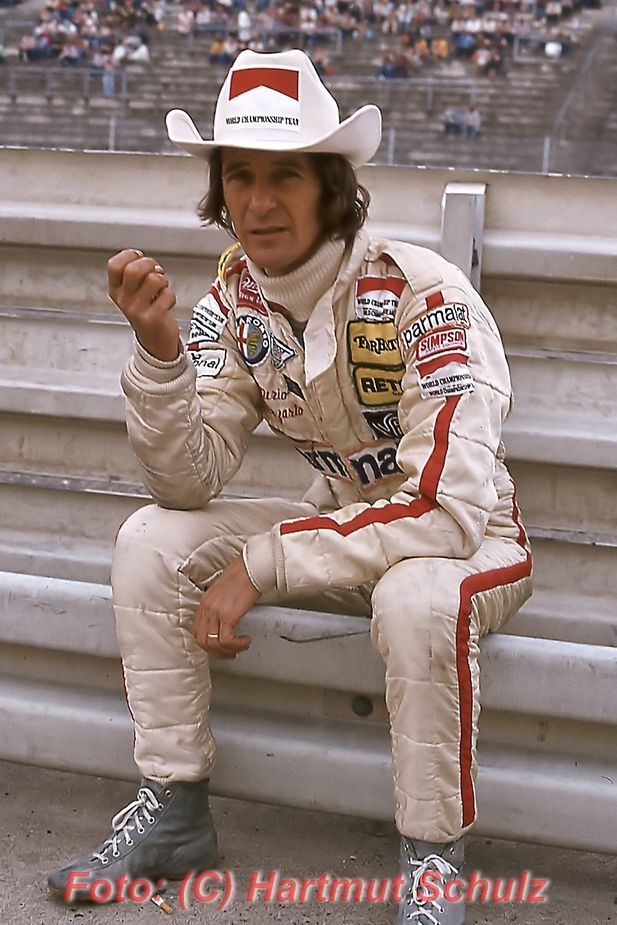
Between one race and another, Arturo remains one of the few to say what he thinks. «We all know we cannot make comparisons between different eras and I wouldn’t like to be the one who usually tells "in my day..." But, since you insist….»
Outspoken, Merzario never stops. "Point one: there is too much technology. The teamwork that developed in the close relationship between the driver, mechanics and technicians, is no longer exalted. The engineers and in the category Mauro Forghieri was a true champion felt under pressure because him and those like him were aware of the dangers run by those who entered the cockpit: on the other hand we risked our lives, just a bolt of poor quality and you were screwed if it broke at the wrong time. The iron of the gates was used to assemble the single-seaters: the materials were often not very noble and you had to put your own, as far as possible, to bridge the differences. Now computers even tell you when stopping to pee. But is it possible? When I was racing in Formula 1 do you know what happened instead? That sometimes you could not even see the signs from the pits as they were what they were and maybe it was pouring, you were overtaking or you were defending yourself from an attack by a rival. At other times you pretended not to have seen them, because the owner of the car were you: it was your fucking business..., pardon my French and there were no excuses. And then... how much effort... Not like now that, after the Grand Prix, they are fresh as roses and ready to go dancing. After three laps we were already distorted: we were sweating like pigs in our suits, whether we went 200 km an hour at Monza or 80 in Monte Carlo where, however, you had to be careful also about the "bollards" positioned a few centimeters from the track (in 1967 Lorenzo Bandini died right after he crashed his Ferrari against a column for mooring boats: the car caught fire after the impact). Racing was very dangerous. And then, to be honest, now there are jets and helicopters: we went away by car, maybe the four of us in one of them, uncomfortable. The masseurs didn't exist, the diets didn't either. But there was humanity and a sense of friendship that unfortunately seemed to me forgotten."
Between 1972 and 1973 Enzo Ferrari gave him a single-seater to participate in the Formula 1 World Championship: it was a problematic Red and only two podiums and a few points arrived for Merzario. The first, on his debut at Brands Hatch, in the British Grand Prix. «I had an exceptional relationship with the Commendatore. He loved me because I wasn't afraid of anything, not even to criticize. From 1 to 10, someone like him today would be 100. And watch out even for Bernie Ecclestone, who is of a certain age. I wish him to pull the cart for as long as possible because after him the situation will become unmanageable: the interests at stake are many and I am convinced that, when Bernie will retire, there will be all kinds of excitement».
Yes, but then who do we save? "The best of all is "the Pale". Hamilton, whom I call affectionately "Pale", is a phenomenon. He can be compared with a Jackie Stewart or a Lauda, to whom Vettel also resembles in some ways. Nico Rosberg is a calculator, quite the opposite of his dad Keke. But try to go explain to a new generation driver how we drove: as soon as he sees the gearshift lever you already see a nice question mark on his face. Let me put it like this: I would not be able to make the most of a Formula 1 car today but the exact opposite is also true."
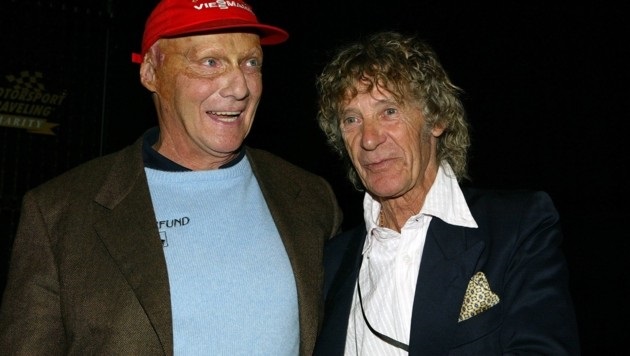
Him and Lauda. "I am not interested in gratitude, but it should be noted that the Austrian state and the Italian state felt obliged to assign me a silver medal for civil value for the gesture I made...", Merzario proudly said.
Niki Lauda: "a miracle, but I never thanked Merzario."By STEFANO ZAINO, 30 July 2016.
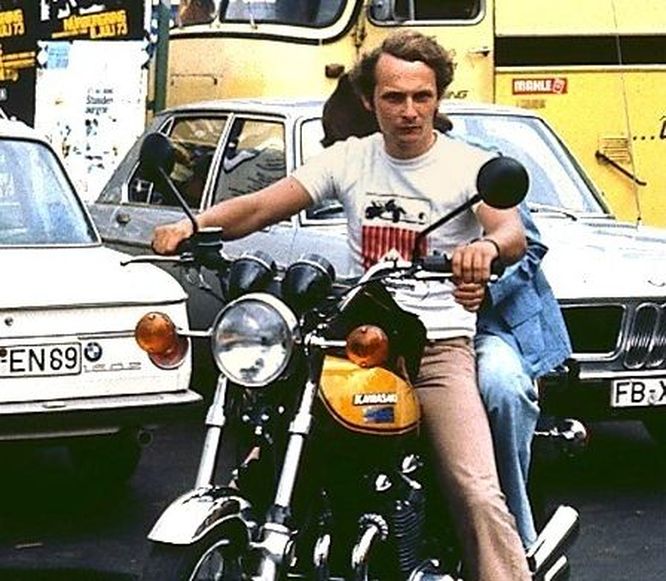
Hockenheim. Lauda, what do you remember about the crash?
"Nothing."
What do you mean nothing, you were between life and death.
"I forgot everything after 42 days, when I went back to race. Everything was erased from my mind. As if it had never happened."
Explain yourself…
"The more terrible the accident, the more a driver must strive to eliminate every image, every sensation. If you remember, you get into the car and tremble and you cannot afford it. In that case, it is better to stop, retire."
Instead you continued, lost three races, touched the World Cup and won it the following year.
"I had faith in myself, I knew I was good at driving, I couldn't have forgotten it. I said to myself: if you go by car on the road, you can also get back on track. If you race with Ferrari in Fiorano, why can't you do it in any circuit?"
So, six weeks later, you showed up in Monza. Lightning and courageous return, everyone told you were insane.
"I felt at my best, but the doctors did not agree. They called me, they did a lot of tests, they told me not to get smart, they gave the impression of not trusting me. They put enormous pressure on me, I was confused and this made me make the biggest mistake of my life."
Meaning?
"I never said thanks to Merzario for saving my life, I never went to him to shake his hand in person, to embrace him. It is something I still regret now, a wound burning, more than the scars I have. An unforgivable mistake which, after years, I hope to remedy."
Of having stopped at Fuji leaving the world championship to Hunt, instead, have you ever regretted it?
"No. I'd do it again now. And it has nothing to do with my accident at the Nurburgring. It wasn't possible to race, too much rain. After many postponements, the race director at 5 in the afternoon decided: everyone in the car, we race. I, furious, go to ask and he answers me: television needs, it is the first time the event is broadcast worldwide. I tell him that he is mad and that it won’t be a camera to decide on my life. I stopped and I would have done it anyway: even if I didn't crash at the Nurburgring. You don't play with people."
It cost you a World Cup.
"No, I lost because I missed three races after the Nurburgring."
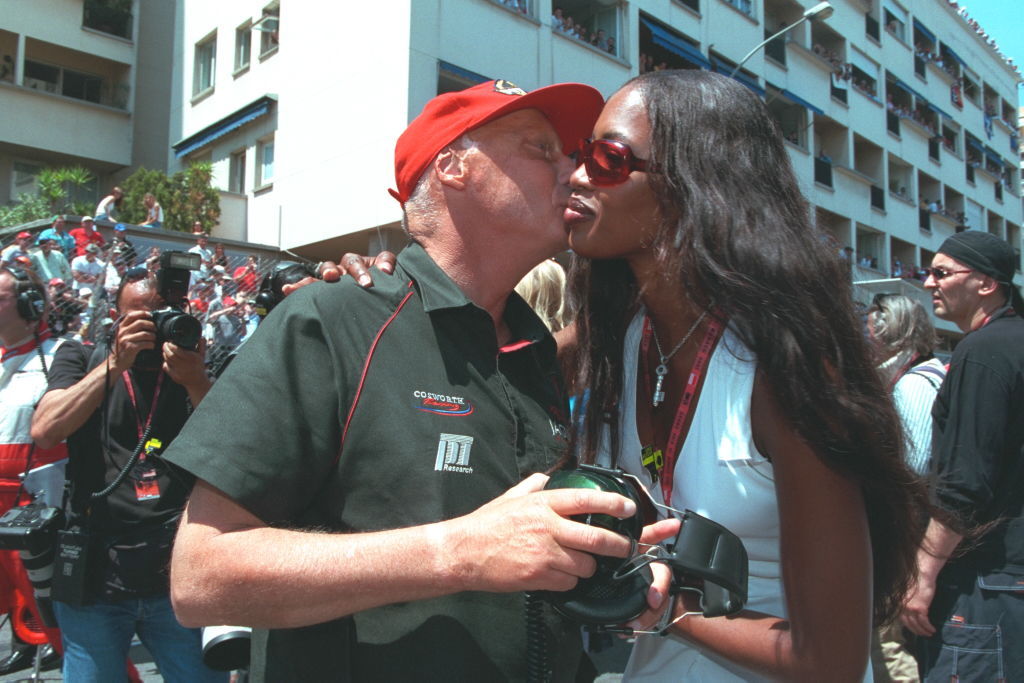
Would you race today?
“I wish I were a driver today. I would still have my ear and earn a lot more money. I saved myself by a miracle.”
The FIA wants to impose the Halo to all drivers, for safety.
"Imposing is wrong, but reducing risks is a good cause. It saves lives and does not take anything away from the show."
Niki Lauda had a pretty good scare during the summer of 2018. However, he did not lose the fighting spirit that has always distinguished him and the tongue remained quite silver.
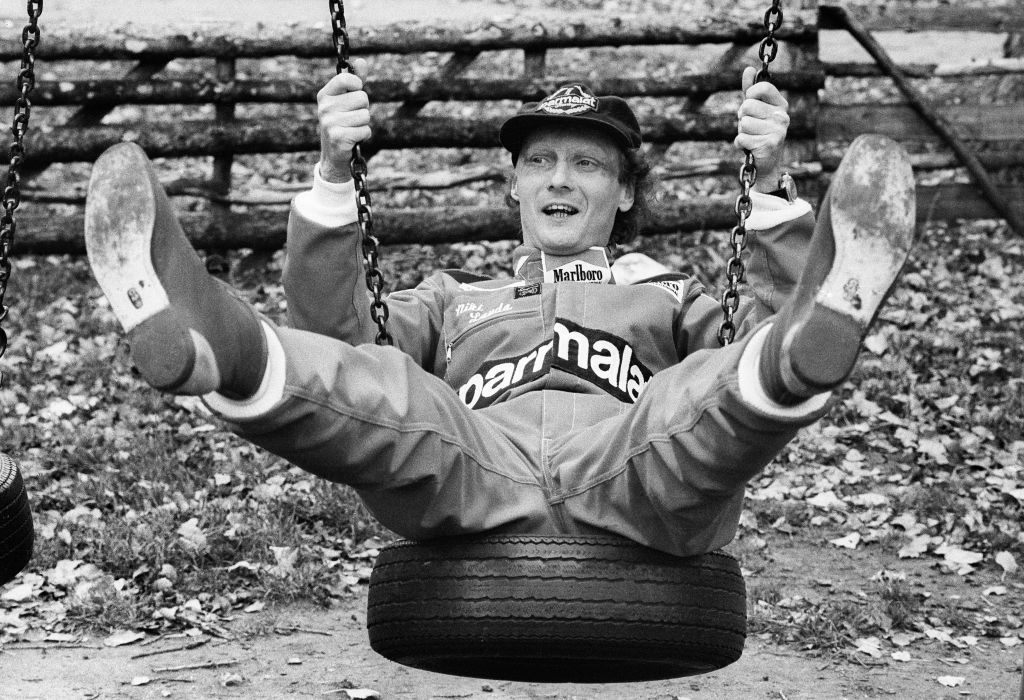
In a recent interview, Niki explained that the lung transplant suffered in the last week of July 2018 was worse, as an intervention and as a convalescence, than the accident that made him famous and that changed his connotations forever. Since that incident he survived almost miraculously, returning on track only a month later, despite a fulminating cure based on cannulae for the drainage of residues of breathed fumes and anti-burn patches.
Here are his words: “at first I didn't believe it but then I took note of the situation, starting to ask how long the hospitalization would last. When certain things happen you always have to look forward to the after. When I had the accident in Germany it was only a matter of a month or so. I had burns, I was scorched, but I got out quickly. It has been really long now, but I'm still here. In spite of everything I didn't miss a single Grand Prix, even though I was in the company of many drip tubes. I have to be honest: I've never been afraid. I was in the hands of excellent specialists. I trusted them. I knew it was going to be tough, very tough. In such conditions I could only do one thing: fight. I did it for every moment, I'm still doing it."
However, Lauda worked in the hospital and finally, after many months, he had the go-ahead to return to his family: “I was in hospital until two days ago, then I was allowed to go home and flew to my home in Ibiza where I will spend Christmas with my whole family. However, I have to undergo six hours of training a day, assisted by two trainers who do not leave me even for a moment. But being within my walls is another thing, the air here is clean, the climate is not like in Austria. In a month, they told me, I should be fully fit and ready to start life again. I will follow the Grand Prixs as before, why not? Already this year I attended all the races I could, then from the hospital I phoned the pits on the weekends, they always told me what was happening. It was like being with the others on the track. I must say that I discovered once again the warmth of the people I have been working with for years. All good men, all worried about me."
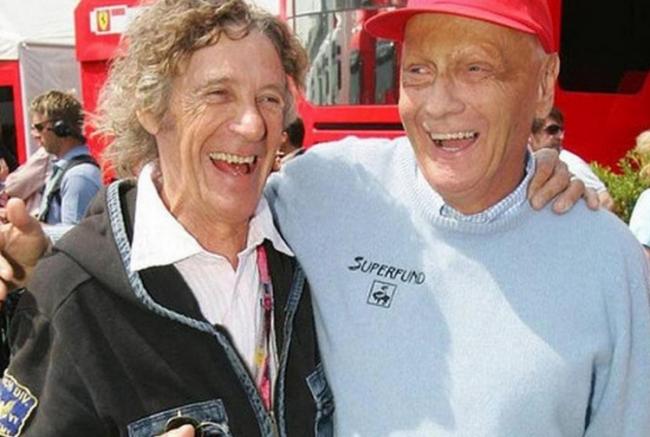
Over time, Arturo had released interviews on Niki, tracing an unprecedented profile of the Austrian champion.
“I have known Niki Lauda for forty-seven years or so and, contrary to what many of you will think, the first time we did not meet or collide in a single-seater but we took part in the same races of the Euro Marche 2000, championship at the time very important and that lined up on prototypes in tight sprint races pilots such as myself, Redman, Bonnier, Bell, Elford and many, many others. Lauda was young at the time and was still learning.
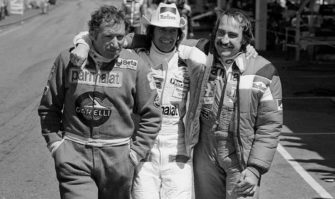
After all, like many others, he came from motorcycles and tried to find an identity with a steering wheel in his hand while, as far as I was concerned, I had made a name by winning the most important classics with the Prototypes, among other things contributing significantly to the World brands 1972 won by Ferrari. In a nutshell I had, not even turned thirty years, an enviable curriculum and he, instead, was a boy who was getting busy renting since 1971 a March to debut in F1 in Austria, finding a place the following year in Herd and Mosley's team, which was in fact the first to systematically rent cars in modern GPs. A little formidable start, therefore, for Niki who, in 1973 goes to BRM and establishes a good relationship with Clay Regazzoni, who does everything and manages to bring him with him to Ferrari in 1974. The good Ticinese driver feels compatible with Niki and nevertheless is convinced in his heart that the young Austrian, no matter how fast, can never overtake him with the same car. Indeed, having someone like Lauda at home, also in Maranello means not by chance eliminating any remaining chance of coexistence with the “Count of the Ardennes”, as I call Jacky Ickx, who in Ferrari would still be a very, very bothering rival, since those of Turin have always liked him very much. Clay however, if that's what he thinks, is wrong or at least is drawing up the bill in the absence of the innkeeper. As there are also other factors which will prove to be decisive, changing the course of history and what he hoped for. First of all, Clay underestimates how much Ferrari - and Enzo Ferrari himself - are fascinated by the idea of proving successful by having a practically unknown driver behind the wheel, because this automatically implies giving the maximum imaginable merit to the car and the brand it represents. Second, Clay himself does not fully calculate that Niki is still young, he is storing and developing experiences quickly and will soon translate them into a very strong growth. All this leads to very surprising things, because in fact Ferrari loses the 1974 World Championship as it does not fully support Clay Regazzoni focusing a lot on an illustrious stranger, namely Niki himself. Here, Niki, really him who goes to win the World Championship the following year bringing to fruition this dream of Enzo Ferrari, that of being great again making drive a boy brought up by him, shaped starting from little more than zero, thus magnetizing the maximum of merit. I remember and you should remember it too that, at the end of 1972, there had been a secret and revealing lunch in Maranello, to which the great Jackie Stewart had been invited to seek the path of a sensational agreement. A simple story. On one side of the table the Scotsman, on the other Enzo Ferrari, his son Piero as a witness and Franco Gozzi as a translator. Stewart begins to speak and, beyond the amount he claims, he begins to list the benefits he wants, rattling off a pretty long list. When he arrives, whatever, to travel in “star business” class, perhaps with the guaranteed frozen champagne, Enzo Ferrari blurts out, becomes furious and says in tight modenese dialect to Gozzi: «what the hell does this guy want from me, even the factory?!! Let him know that I say thank you and that it was a pleasure to deal with him. Waiter, feel free to bring us the coffees!" Didn't you get the memo? Now, here, you think in such a situation what kind of revenge was for Enzo Ferrari returning to amaze and defeat the F1 with a boy in his twenties, nice, taciturn and, at the beginning, almost without big pretensions... Practically the dream of dreams! Here therefore that everything has its own logic and harmony. Niki Lauda gives birth, for better or worse, to the epic with Ferrari, which could have been more successful precisely because he becomes and knows how to be the right man in the right place. Then, of course, August 1976 arrived, the German GP at the Nurburgring and in the turn of Bergwerk the story changed forever. And here, of course, I have to say a few things. First, it is true, historically I am the man of whom Lauda took the place in Ferrari, but it was me who left Maranello’s firm and not vice versa. Let me be very clear. It was me who migrated to other shores not Enzo Ferrari to move me away. Carve it well in your head forever.
Second, arriving in Bergwerk and seeing that the apocalypse had broken out, in fact I didn't have time to reflect. There was a human being in danger of life and in one, maximum two seconds, I had to make a fundamental decision for his existence. And I took it, getting out of the car, throwing myself into the flames trying to save him and succeeding. Full stop. I would have done it for anyone, for the best friend, for someone I disliked or for another indifferent. There are particular moments in which we are men or we are not, that's all. I think I was and in the right way, without wanting, claiming or deserving praise or applause. Do what you have to do, row. Of course, from then on the relationship between me and him has not been entirely easy due to various misunderstandings and things that have bothered me a bit, which I am not here to even summarize. The moral of the story is that relations between me and Niki have returned to normal and became nice when Bernie organizes a real reunion at the Nurburgring in the thirtieth anniversary of the rescue from the stake in Bergwerk, with a crew of the German TV RTL that films our return on the place and a kind of spontaneous ceremony as nice as touching.
So, of course, from there on things have improved a lot between us, even if I consider that we are friends-enemies, here it is. We spoke over time, the last time a month ago. He was very fatigued from the surgery. Of course, we remain two very different types but I want to be clear that I consider him one for whom I feel something strong, intense. And I consider him a very intelligent, shrewd man with a strong personality. And then there is nothing to do, behind the wheel of a F1 car, speaking of it in the historical present, Niki is one who unquestionably knows how to drive. Indeed, he is one who taught the world that you can win the war as long as you know how to settle and avoid winning many small battles at all costs. In this he was not even the first in the modern history of F1, if you think about it. Because I say that Jackie Stewart was the founding accountant of the GPs, then Niki arrived and opened the first practice as a big chartered accountant in the Circus. Then, in the end, here’s Alain Prost who becomes Bocconi professor, teacher and luminary. Clear, isn't it? But the importance, valence and value of Niki are all there. Including the merit of being at the forefront of the great Mercedes of recent years. And I also say that, as for Fuji 1976, I can understand, justify and excuse his courage to be afraid, after what happened to him. For the rest, as a driver and as a man he is one who knows what he says when he speaks and you can enjoy it in many interviews found agreeing with me. Finally, I also confide another thing to you with which you can only agree.
Niki is also someone who is bloody lucky in life. Because in his most unfortunate moments every time he finds himself in the right place meeting the right people. For example, by saving him from the flames of the Nordschleife, I have given him 43 years of life today and there are many. The same thing can be said of the doctors who ripped him from death by transplanting a lung, a very complex operation and not always kissed by a successful outcome. There is no way around it, everything is going well for him. We also think about the accident with the tractor, something that was apparently stupid but that could have ended very differently. Here, this is a strange, complex, very beautiful story which shows how much individual skills count and how much the head can help you, where it can compensate and go beyond where your foot on the accelerator doesn’t get. Because Niki was also this as a driver. The king of rationals who knows how to defeat great instinctives. This is also why he is in history, forever.
What did I think when Lauda returned on track after 42 days? It was in his nature, we competed for passion.
And don't ask me, however, what was his most beautiful victory because I reply, as a driver, that the triumphs can never be calculated and classified at a table. Who knows, sometimes an eighth place with the car that has something wrong is more heroic than a success aboard a single seater superior to all the others even if, in Niki's case, I have to fully recognize refined test driver skills such as to improve a vehicle and make it grow. But, cutting it short, I say that the time I rooted for him the most was last summer, when he risked a lot again and managed to do it, to get out of it. And now, what to say in front of his seventy years? Sincere? Do I really have to reveal to you and at the same time tell him what I think? I have his secret cell phone number here, the one he gives to very few in the world. Well, I will certainly use the private number to send him warm greetings.
And, just between us, in the end I will remind him of a rather important aspect of this matter. Dear Niki, you are 70 years old but look at Merzario's seventy-six altitude. There isn’t much we can do about it, however hard you try, just like the day we met on track the first time Arturo is in front of you! A hug Niki, I love you.
May 22, 2019. Now that Niki Lauda is gone Merzario tells Niki.
"Niki's luck was not to have extracted him from the burning car and prevented him from dying burnt alive as had happened to Roger Williamson in the 1973 Dutch GP. His luck was that I gave him cardiac massage and artificial respiration, as I had learned as a soldier in Naples. When the doctor arrived he told me that, without that operation which lasted two minutes, he would have gone into a coma and would have died", the former Italian driver said to Mediaset Sport.
"I saved his life and Niki didn't thank me right away but he was an asshole, obviously in a good way," he added. "He thanked me only after thirty years. There was too much rivalry, we were really enemies-friends, Merzario continued. In competitions we were super enemies but in private we were friends, when we put on the helmet it was like going to war. Drivers were like that, on track they were not answering to no one but there was no greed like now and there was certainly a great sense of solidarity in difficult moments. When there was an accident we did group to delay departure and allow our colleague involved in the accident to restart. We purposely delayed the restart, something that now no longer happens."
“Of course, for Niki it could have been “in for a penny, in for a pound”, he bitterly commented. He could live at least another ten years. And now, without his presence in the Mercedes driven by Toto Wolff it is not excluded that something can change.”
“We often spoke - Merzario said - and I was in close contact with his son Mattia lately. When he left the clinic (August 2018) I also had him intervene in the live broadcast in which he participated.”
“Then he said that he was better but we knew that his days were numbered. He was now forced to live with an oxygen cylinder. After the lung operation we knew that every day that went by was one day gained. He managed to survive a few months and it was already a lot.”
Thursday 21 May 2020. "My life with Lauda."
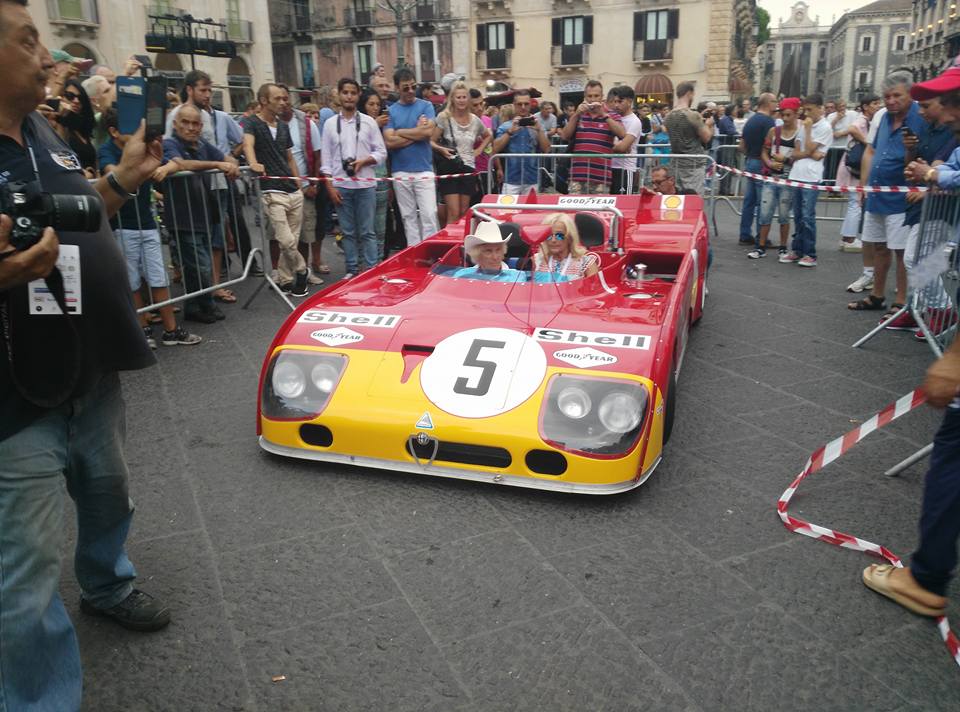
A year ago today the great Niki Lauda died. And with him left, also, a part of Arturo Merzario’s life. The lives of two men tied to each other. A novel story between misunderstandings, gibes, incomprehension leading to the great peace of 2006 and a relationship between the two found, another 13 years lived, now yes, as friends. We spoke with the former Como champion, a year later, to reveal the story of the controversial relationship between the two.
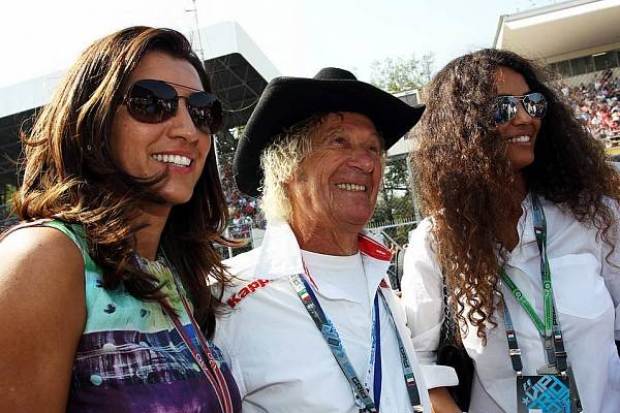
Merzario, you are an ironic and irreverent character who often enjoys making fun of life's cases. But after Niki's death we saw you moved.
“It is difficult to talk about it even today without feeling a little emotion. Part of my life is gone. Imagine you are always linked to another person for such a particular episode. Of course I feel a void near me.”
Enemy-friend is a definition that you use very often. Right?
“Right. He was a character who knew how to be ruthless, ruthlessly lucid. It was a bit like that with me too but the story has been long.”
Can we talk about a big misunderstanding?
“In part, yes. And the press has done its part to blow at fire of an affair. But we can't talk about invention eh...”
You save Lauda’s life and a wall of incompatibility rises. It is hard to believe it.
The episode must be seen in its context. One piece attached to the other. Like a domino.
So?
"I disliked Lauda a bit because in 1971, five years before the accident, he made me lose a European prototype championship. He was racing a single race on the Salzburg home track, I was in contention for the title. He did that race with the cheekiness of the spoilsport boy who then looked at you scornfully with a half smile. Like today's Verstappen. I, instead, lived it badly because I drove for Abarth which risked to close down without that success.»
Then, the second episode.
«I was driving a Ferrari in Formula 1 and I had worked on the project that would later win with Lauda and Regazzoni in 1974 and then also in ‘75 and ‘76. But I left, a victim of my temper. The couple would have been Merzario - Regazzoni, instead Lauda arrived in my place. Of course, watching that car that won, that I could have driven, made me angry. This is why I always defended Regazzoni and also said that Ferrari had taken an illustrious stranger like Lauda to prove that it was the car that won and not the driver."
Did you really think so?
"A little yes, because I knew the philosophy of Old Enzo. But Lauda was a very intelligent driver, who made them take one more step in the approach to tuning. Having said that, if he drove in 1973 he wouldn't have done anything. He had a good Ferrari. He was a great leader of a newly competitive package."
Then the accident comes.
«I threw myself into the fire and did two miracles. One, I managed to unfasten his belt. Then I, who weighed 55 kilos, managed to pull out by myself a man who weighed more than me, taking him by the crotch of the suit and the collar behind the neck. I still wonder how I did it».
It could have been an opportunity to put old rusts in place.
"Ferrari thought Lauda was over and looked for Peterson to finish the season and perhaps to make him race the following year. I acted as a mediator and maybe Niki, who was furious about this Ferrari initiative, knew it. Then the Red took Reutemann but Lauda returned shortly after a month for the Italian GP and did so with the anger of those who wanted to prove they were still there."
There comes the decisive episode, let's call it the misunderstanding.
«During the qualifyings on Friday it rains and Lauda is uncomfortable, he does a few laps, then returns to the hotel with a load of very strong tension and nervousness, perhaps panic, certainly uncertainty. I saw him walk past my motorhome and the fact that he didn't even stop to greet me made me angry. I was wrong to ignore the circumstances. But I was the man who had saved his life, a greeting I thought I could also deserve."
We were talking about the peace.
«In 2006 Bernie Ecclestone organized a repatriation at the Nurburgring. They called me but I didn't know there was Niki. Maybe if I had known it I wouldn't even have gone. We found each other, he thanked me in front of his children, we cancelled everything. And years of affectionate long-distance friendship followed."
Did you find the driver in the Lauda manager?
"Sure. The most important characteristic of Niki Lauda was intelligence. And as a manager he showed his talent absolutely. He was a great manager. What Ferrari didn't have in managing two roosters in the chicken coop. I think he learned from Ron Dennis. The only one today that looks like him is Helmut Marko, who manages the Red Bull drivers. Curiously an Austrian like him.»
What do you remember of Lauda's funeral?
"The feeling of serenity of everyone, from ex-wife Marlene to children and ex-colleagues. A dignified and composed checkered flag for one who has always achieved his goals. Lauda was born a champion and died as a champion."
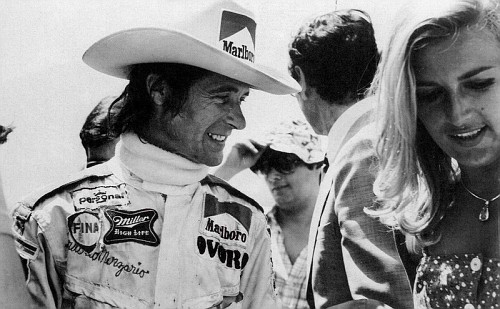
Arturo Merzario lived in another time but is still a protagonist of the current one. He gives pearls and continuous anecdotes. All seasoned with a contagious sympathy that makes the stories funny and flowing. Always ready to joke, in contrast to the almost austere climate of his time. But the passion remained the same. He tells us, with surprising lucidity, the changes that have taken place, item by item.
Arturo Merzario.“At 18 I did my first race in Monza and then I never stopped.”
"In 1991, after the accident, I risked being paralyzed and being able to move my eyes only. So I could not even commit suicide, as the chief of surgery said. Only with the implantation of a Halo device that stopped the neck with two screws in the shoulder blades I was able to return to racing after six months, being second in Magione with another car. In life luck is always needed."
Bernie Ecclestone.“I met him in the early 60s, when he was Jochen Rindt's manager in uphill races and sometimes was helping him to change tires. There was also Jim Clark with the Lotus Cortina. Although we have fought many times, he was the one who gave the turning point, he had an edge. He changed sports car racing. He was a son of a bitch. He was only looking at money. If he had an interest he made no difference whatsoever, otherwise he didn't give a shit about you. He brought the money to the teams that before, including Chapman, came to the circuits with broken-down buses - sometimes driven by the owner - and taking their seats in the lawn. The rich were the builders not the “garagisti” (garage owners). He made a gang of beggars billionaire. Ron Dennis, Frank Williams, Jacky Oliver were beggars. They didn't have the money for airline tickets and now they have personal jets. And the same goes for the drivers and team members of all the teams, including Ferrari, who traveled with four people in the car with the spare parts in the trunk. Luxury hotels, pits and motorhomes started with him. He proved by facts that everyone would earn more with him. He was undoubtedly making money but without him they would have kept on being beggars. Ferrari, with Ecclestone, had guaranteed itself better treatment than others, since without Ferrari motoring would not exist. Bernie was the only one who could really negotiate with Enzo Ferrari. No one else was allowed to do this, except for cosmetic meetings. Ferrari also had to bow to the fact that it made more money with Bernie and then accepted the agreement with him. The driver that Bernie had in his heart was Emerson Fittipaldi but he never had him as a driver. Ecclestone, who then decided on the life or death of the protagonists of the F1 circus, had introduced the idea of renting the second car to those who brought the money and that's how the sponsors were born. It is a pity, however, that the paying cars all stopped in the first 10 laps of the race because they were deliberately given less petrol…. Formula 1 was born thanks to Ecclestone, bandit among bandits. He guaranteed car manufacturers, with a lower cost than just the Le Mans race, the entire F1 calendar of twelve races around the world, including travel and transport costs and with more visibility - and he succeeded. This is why everyone followed him and F1 was born. Bernie's brilliant idea was to bring together all the “garagisti”, that is simple assemblers not only English but also French, Spanish, etc. and all those who had a passion for motoring, allowing them to be able to express themselves in F1. Because the engine, apart from three or four different ones ie Ferrari, Matra, Brm, was unique, the Ford Consworth, the gearbox was the Hewland FG400 or 300 to be more robust and then 4 sheets were folded or 4 pipes were welded to make the car at home in the basement. Everyone could indulge himself because it was easy for all. Everyone could improvise himself a builder. The only British teams that could be considered true builders were BRM and Lotus, the rest, including McLaren and Williams, were just passionates. 36 - 38 cars were registered for each GP. Then, with the new regulations, the small teams had to close down. Ecclestone also introduced the fact that each driver had a fixed number that would follow him even in case of team change, so the fans identified the driver with the number, which was not the case before. The dimension of the numbers was fixed in a certain size which, due to space requirements for the sponsors, has always decreased over time until today that numbers are almost invisible.”
Carlos Reutemann. “He was a fast driver but he was always complaining and his constant grievances, even when he was doing good, annoyed the mechanics who then tended to marginalize him and not take him seriously anymore. He was never happy, they called him the "gaucho triste” (sad gaucho).”
Clay Regazzoni.“I met him in a dance hall in Lugano which was called "La Piccionaia" (Pigeons house) because it was in a loft. At the time there were no discos, there were dance halls. He was too exuberant, he did not take example from his previous accidents from which he miraculously emerged unharmed. Too sure of himself. I had warned him a thousand times. After the incident that left him paralyzed, in the early days he was still jovial and optimistic then, when he realized that it was actually for a lifetime, he lost his morale. Since I met him after the accident he said to me: "what a blow ... That hurts!"
Emerson Fittipaldi.“Exquisite person. He was nicknamed "el rato", the mouse, because he would go behind you and began to gnaw at you.”
Ferrari.“Ferrari had 12 cylinders engines that ran at 10.500 – 10.800 rpm, 1.000 more than the Cosworth that ran at 9.500 with peaks at 9.800 for short periods in qualifying. Ferrari, instead, at 10.800 rpm could do the whole Grand Prix. Ferrari 12 was the flagship. If you put the wrong gear you did not bend the valves, with Consworth if you were wrong by 50 rpm you folded the valves. In Ferrari, even if you were wrong by 200 rpm, nothing happened. Today, running at 15.000 rpm for a F1 engine is the norm but then running at 12.500 rpm as Ferrari engines did was futuristic stuff that only Ferrari could do. At the time Ferrari preferred to invest in engines rather than innovative materials related to lightness because most of the circuits had bends but above all straights. With the introduction of the variants for safety reasons, the 13.800 – 14.000 revolutions per minute in fifth gear were no longer needed, the 11.000 of the Consworth were enough as immediately available. On track we joked with everyone except the men in the Ferrari pits because Ferrari was Ferrari. And even today nothing has changed, Ferrari is the reference point. When a driver was nominated by Enzo Ferrari or his close collaborators among the candidates to drive a Ferrari it meant that they would never have taken him. The driver of whom there was absolutely no mention was hired. There is talk of the fact that Ferrari wants to exceed 10.000 pieces a year but it is not a good thing because it is now a car too easy to be bought, by the rich and the pseudo-rich with funding. If they had wanted to increase their turnover it would have been enough to increase the prices of spare parts, as 10.000 rich people in the world would always be found. In recent years, for two years Ferrari has had the top car or at least on a par with Mercedes and, - Vettel yes, Vettel no, Arrivabene yes, Arrivabene no - has not won the world championship. Mercedes has won 6 world championships but the idea is that it beat Ferrari not other competitors. On the day when the competition with Ferrari stopped, Mercedes would no longer have reason to compete because - and here I reluctantly agree with the Old Man - it would only compete against the garagisti. Ferrari is the yardstick of everything. I am always Ferrarista, with Ferrari in my heart.”
F1.“Before, after overtaking we made jokes about it after the race, today you don't talk to each other for three months. Too much professionalism, too much money. We too made a lot of money for the time and went around the world, which was not easy in those days even if you were rich because there was no mentality. Today trips are paid in installments and they all travel everywhere. After the races, even the most distant ones, we immediately went home without staying out other days because it was expensive. Today it is no longer so. And when we came back we had to describe the places where we had been to friends because there was no TV to make those faraway places known. Back then it was still a real sport and the accidents were real, not like the modern ones that are video game crashes. At the time, the accident was around the corner and when it happened if everything went well you got pretty badly hurt, if it went badly you died. And the accident almost always depended on a mechanical failure. The most dangerous things that could be damaged were the brakes and steering. Gianni Agnelli came to visit the Ferrari F1 team and it was a pleasure for him to be with us. And the same was true of other characters of his caliber. Today’s characters, who do not remotely have his thickness, show up with a tail in tow. The manufacturers were car ones and not sweaters like Benetton or drinks like Red Bull. The car racing public was more educated, more cultured, with more money than that of motorcycles. Each driver was a character at the time, it is not like now that they are remotely controlled and cannot speak without having the press officer of the team they race for alongside. Each driver made a helmet with drawings that lasted for a lifetime while now they change them every week. The designs on the helmets were not adhesive like today but had to be done with the brush, that’s why they did not change and had colors and designs that were easy to make, the opposite of now. Motorcycle helmets have started this trend and are now unrecognizable as far as riders are concerned but more profitable in terms of colors. Before, you became attached to gloves, shoes, helmets and replacing them became a problem as they were part of yourself. The cars of our time, as soon as you touched them, they caught fire and disasters came out. In their respective teams the Italians and the British saw each other as smoke in the eyes. With the money of the Elf a school for French pilots was set up which churned out several champions. On those days there were no servos in driving: steering, gearbox, brakes were manual. If it rained buckets of water would arrive, not like today that with aerodynamic evolution you do not take even a raindrop. Among the drivers it was a challenge of ability, without damaging the opponents. In the end, we patted ourselves on the back, went for coffee and discussed the maneuvers we made on track in a friendly and playful way. Today this would be unthinkable. In the F1 of that time, for aerodynamic reasons, you did not go beyond 290 km per hour while the prototypes with covered wheels even achieved 360. At the time a F1 had a shaking of 60 - 70 millimetres,today if you have a 15 mm one you are already in difficulty because all the aerodynamics change. In my days, every technician in every field was free to express himself completely. Today the cars are all the same as they are designed by computers and this freedom is no longer granted at all, even for mass-produced cars. Before Chapman, the manufacturers did not consider a weight of 10 - 15 kg higher than the limit for F1 cars to be a problem. And the same was true of the weight of the fuel which was not important. The technicians had no computer or laboratory and had to rely only on their ingenuity to create. They were more technical than today because, with very poor materials, they made the races work for hours and hours. From the late 1980s onwards, I have always made the difference between paying and paid drivers. Overtaking really existed and the cars really failed. If you didn't treat them well they would break. The money available in the last twenty years has meant that the cars practically do not fail anymore, also because the drivers are not given the opportunity to let them break. Radio orders are executed under penalty of dismissal. Once, if you didn't hit your opponent with a wheel, you couldn’t consider yourself a driver, now they take away your license. Tires were not as important as today, they were more or less the same for everyone. The modifications of the pieces started from the tests on track and from the impressions of the pilot, after which the new parts were produced starting from a sheet of paper and a pen, model maker's activities, etc. That is, if you took the wrong direction in the change you had to start from scratch. Today you press a button on the computer, reset and start again. Motor sport was only for the rich, but true rich men. Sometimes they gave up their inheritance to race. Back then, in terms of safety, when you went out on the track they came to pick you up from the pits only when they no longer heard the noise of the engine. The materials were poor and our biggest risk was the failure of something. The breakdowns were outside the door, of any kind, from stupid to serious things. Races were lost for small things. The pilots were not crazy, they did not go out of line and if they showed they were doing it it was only cinema because they were afraid of getting hurt and not only dying but also having broken bones. When it happens to you, you think about it. To clock elapsed times the “onion” was used, with the subtractions and the tenths did not matter much...”
Francois Cevert.“In the fatal accident, in addition to being very fast, in my opinion he pinched the curb that acted as a springboard and unfortunately with the blades of the guard rail...”
Frank Williams.“He is a true friend of mine and of motorsport. He was considered the F1 beggar. He was very poor and did not pay his debts but when he made the money he invested everything in the team. Enzo Ferrari, instead, invested 50% of the income in the team and kept the second 50 for himself. And this still happens in Ferrari today as it is right to do in a company.”
Gian Paolo Dallara.“Then he was not considered by anyone, look now where he has come. He has always been sidelined as it is now but 80% of the racing car chassis, from the world of the minor formulas to the Indy one, are Dallara. He has always been kept aside thanks to Maranello who did not want another builder to emerge and Gian Paolo, who has a humble character, let them do it. The Italian media do not give him the visibility he deserves."
Media."In journalism we passed from Andrea De Adamich on Fininvest TV and Autosprint for competitions and Quattroruote for commercial transactions - which gave us truthful reports and were the Gospel - to journalists who began to gradually manipulate the news, to invent, arriving to become more important of the news themselves."
Graham Hill.“He was the nicest English driver.”
Jackie Stewart, Niki Lauda Ayrton Senna and Alain Prost. “They were the drivers who have done more politics in Formula 1.”
James Hunt.“He belonged to the older generation. He was a hippy. His goal was to race to set aside money to open a pub in Ibiza and die there and he succeeded.”
Luca Di Montezemolo."Called “Libera e bella”(Free and beautiful),from the slogan of a famous hairspray. Like it or not, even if he has been an asshole to me and is an enemy-friend, if Ferrari has arrived where it is now it owes it to him. As a factory and as a brand he has left an indelible mark. Luca then, again thanks to Ecclestone who was always there and who suggested that he hires the Benetton staff who was in the process of being dismantled and Antonio Ghini who sent Todt over, had created a team in the team that lasted more than 10 years."
Monza ’78.“From behind I saw Patrese who deflected to the right beyond the cones delimiting the track and who, when returning to the track before the curve, triggered maneuvers tending to avoid him. It was probably Carlos Reutemann, who has not returned to his previous performances since that race, who, in discarding to the right to avoid Patrese touched Peterson triggering the carambola that would have killed the Swede.”
“The Lesmo curve, everyone said to do it flat out but not everyone really did it.”
Niki Lauda.“He always won going slow.”
Phillip Morris. “Through the Marlboro brand it spent 40 years ago the money that Red Bull spent now, introducing a method now replicated.”
Stirling Moss."He was considered the one who had won most of all, most races but instead had never won a title, not even a national one."
Villeneuve, Pironi and Patrese.“They risked too much because they came from the minor formulas and from F3 that tolerated everything but, arrived in F1, at high speeds they made crazy accidents and destroyed their careers. Nothing was said to Villeneuve because he was at Ferrari, otherwise they wouldn’t have given him even a tricycle to drive.”
Videos



Comments
Authorize to comment